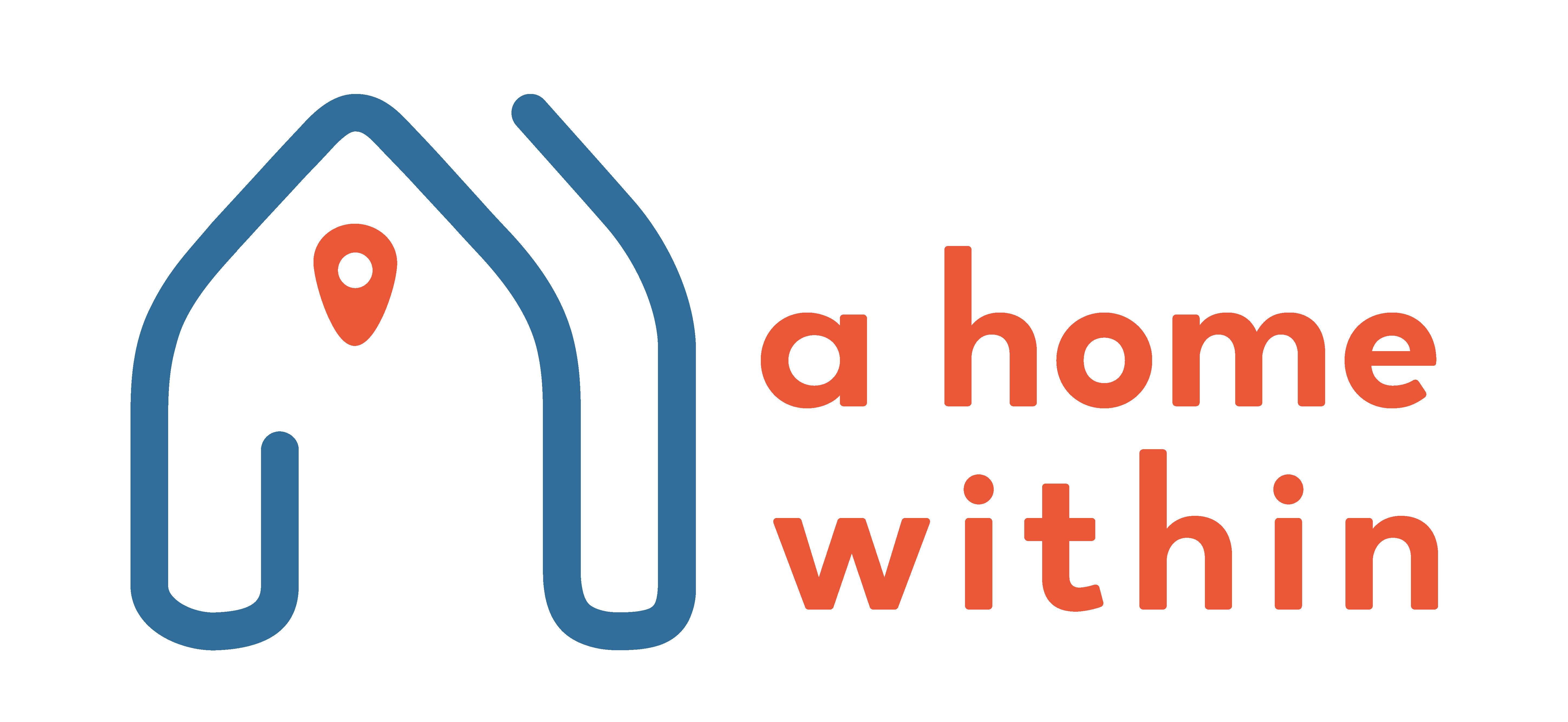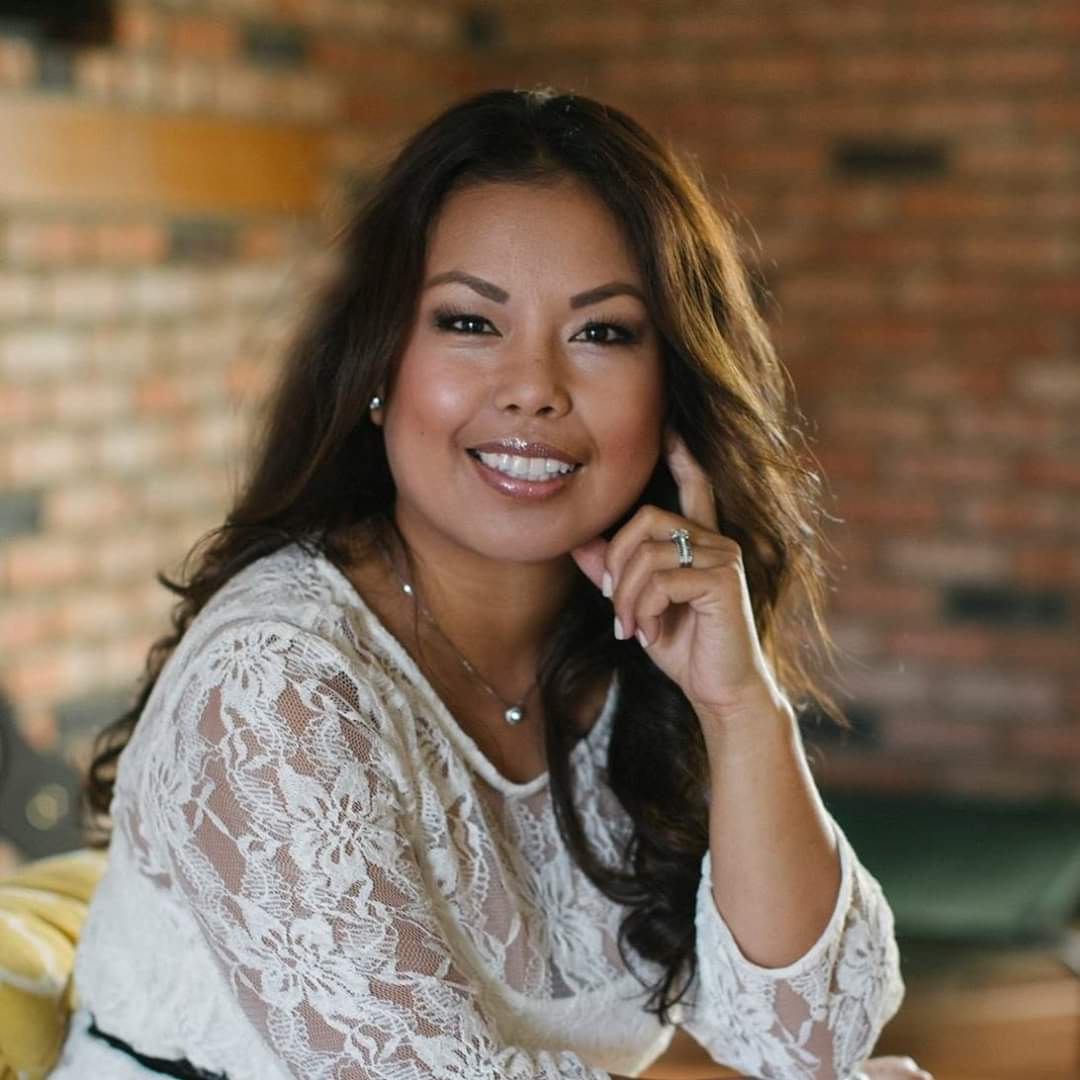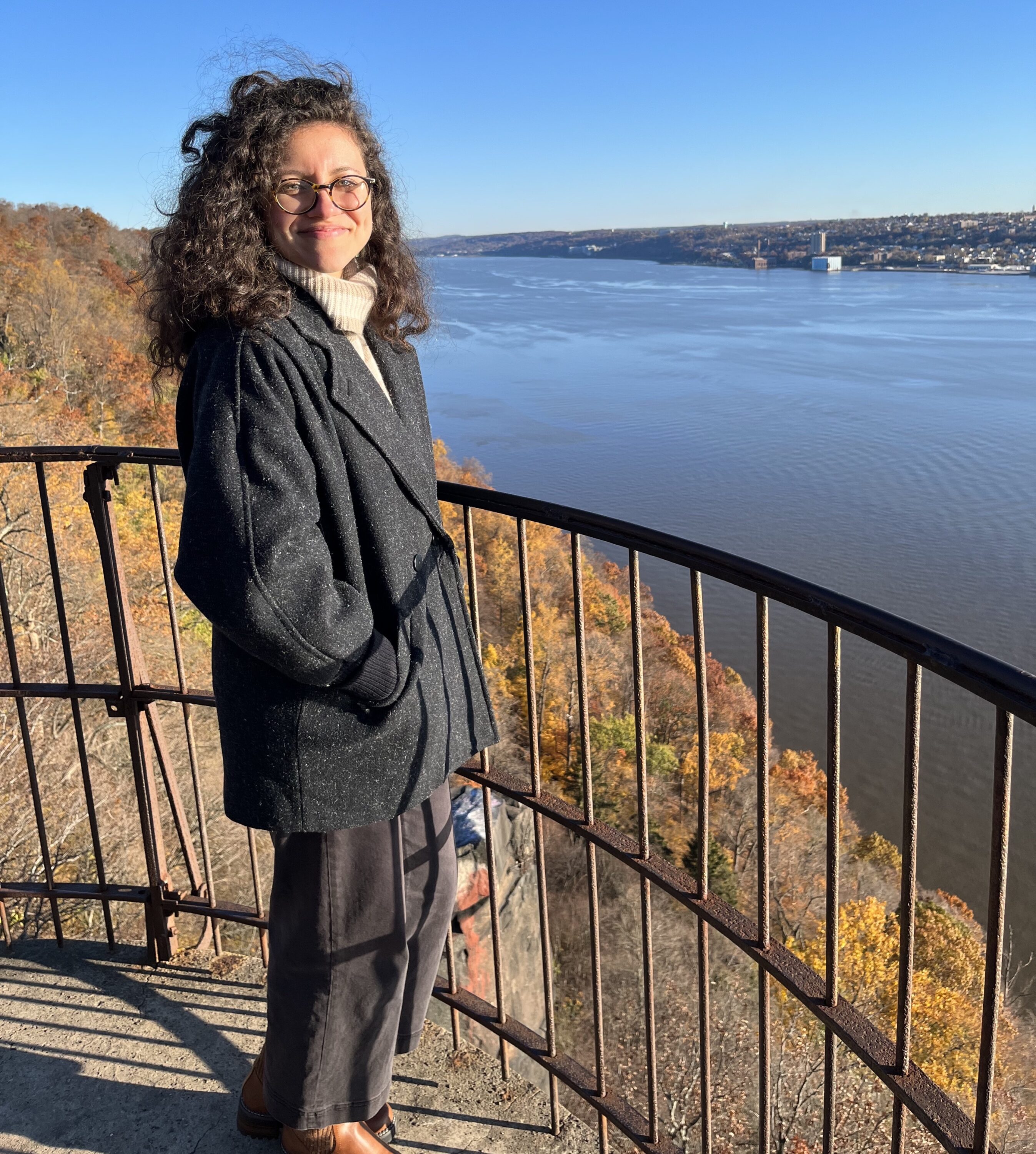
Hello from the Happiest City in America! 😊☀️🌻
My name is Chrissy Arlen, and I’m the Program Coordinator here at A Home Within. I get to work with my incredible colleagues on a variety of different projects, including volunteer recruitment, recognition, and retention; the client-clinician matching process; our rich Continuing Education program; our partner program with CASA; and launching some exciting new projects (read more below!). When I’m not working, I love to move (read: yoga, interval workouts, hiking, etc.), read, deepen my spiritual practice, watch horror films, and grab dinner and drinks with friends! Especially a fun gin cocktail… But now back to work!
As I’m sure you know by now, we at A Home Within are spreading our roots… When our organization was founded nearly 30 years ago, our volunteers were located primarily in and around the Bay Area of California. Since then, we’ve grown to include over 20 chapters across 14 states. I’ve only been here for one year, but already in that short time I’ve witnessed the amazing launch of four new chapters in San Diego, the Greater Oregon area, the DMV area, and Rhode Island. This exciting growth in our community has been an inspiration to me—and now it’s my turn!
I’m absolutely thrilled to be launching a brand new chapter in my hometown of San Luis Obispo!
When I started working with A Home Within last August, I never thought I would be launching a new chapter on my own, but it has proven to be a major highlight of my time here so far. Having grown up in SLO and now living here again as an adult, you can imagine how personally meaningful and rewarding the experience of building this chapter has been for me. It’s exciting to bring something of my own professional endeavors to the town I hold close and relate to my home in a new way.
I’ve done extensive research on therapists in the area and have emailed hundreds of them—some I know, some I don’t!—to tell them about the beautiful mission of A Home Within and invite them to join us. I’m thrilled to announce that we onboarded our very first SLO volunteer last month!

There’s still plenty of work to be done, and though I won’t lose momentum, there are easy ways you can help! If you know any therapists on California’s Central Coast, you can send them a link to our Info Video to learn more. You can also sign up for our newsletter to stay updated on our news and learn about different opportunities and events in our community. Or, by becoming a sustaining donor, you can help me identify a local Clinical Director or two, recruit additional volunteer clinicians, establish partnerships with local organizations, form local consultation groups, and eventually open up for SLO client referrals. I can’t wait to see our San Luis Obispo chapter take flight as a fully-fledged A Home Within chapter. If you have any questions, please feel free to contact me directly here.
By Deanna Linville.
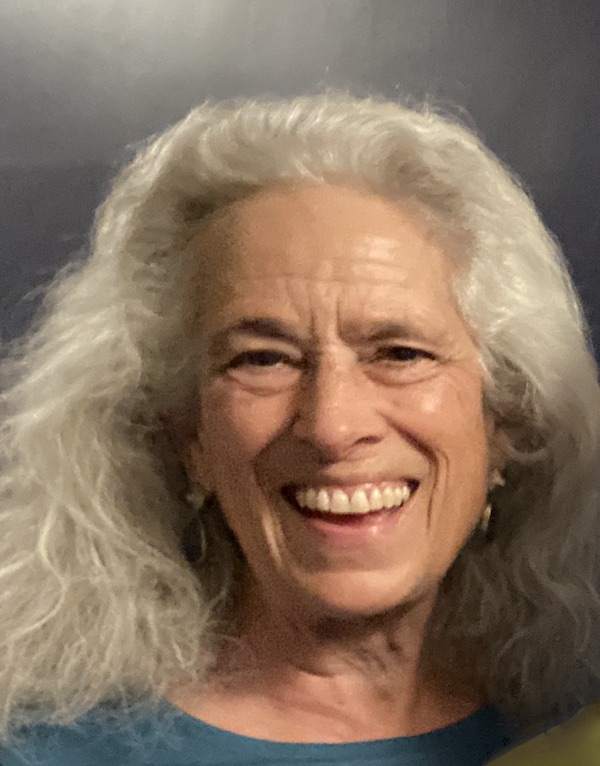
“The therapist becomes part of the client’s network of relationships, which ordinary children in ordinary circumstances completely take for granted. It is just there for them. And that’s what we are trying to build for our AHW clients.”
Recently Eileen Keller, an AHW consultation leader for the past 25 years, sat down for an interview at A Home Within (I am not sure there is anything I have done for 25 years, certainly nothing professional). I have heard those in her consultation group describe the amazing way Eileen facilitates the group, so it was an easy choice to have her be the focus of the next spotlight article in our A Home Within newsletter.
Eileen was incredibly generous with her time, sitting down for not one but two interviews, and I sensed that this was because she truly loves talking about her volunteer work with AHW. When asked why she had agreed to be a consultation group leader back in 1997, she said, “I was completely won over by the premise: one child, one therapist, as long as it takes, and also felt the premise became so obvious once put into words, like a truth one feels one has known all along without knowing it till someone says it.”
Even though Eileen is the leader of the group, she very much sees herself as a member of it. In fact, when I asked her what her favorite aspect of being a consultation group leader was, she emphatically said, “I look forward to my meeting each week with the therapists. I enjoy the camaraderie but mostly I value the depth of their commitment to each other’s cases as well as their own. Inspiring and restorative.”
Of course, group members have come and gone over the 25 years but there has usually been a tight knit few who come together weekly, many continuing for several years. Eileen spoke about the high value she places on AHW’s consultation group model, especially given some of the unique therapeutic considerations for foster youth. She reflected on the need for therapists working with foster youth to be able to ethically activate the attachment system and create a different relational experience. The consultation group members can help each other figure out their boundaries and keep promises to their clients who have often experienced so many broken promises. She said, “It’s so important not to make promises that you can’t keep. One of the things we’re talking about in our group is the absolute necessity to add boundaries about what one gives, because the need is enormous. And you can’t give everything that’s needed. The therapist becomes part of the client’s network of relationships, which ordinary children in ordinary circumstances completely take for granted. It is just there for them. And that’s what we are trying to build for our AHW clients.”
One of the things I value most about being a volunteer with AHW is the opportunity to meet on a consistent basis with other therapists I appreciate and respect. However, from some of my paid consultation and research work with AHW, I know that not all volunteers see the value of the consultation group, and some do not feel that they have the time to devote to AHW outside of their weekly sessions with their AHW client. So, I often ask, “What is the true value added of consultation groups for volunteers? How much do factors like who is part of the group, the experience of the therapist(s), personality, lifecycle stage, client situations, etc. drive the value added?”
For longtime volunteers like Eileen, the consultation group model IS the AHW model. She said, “I don’t think there’s anything like it. Our philosophy is based on our understanding about a ‘container phenomenon in development’. The child and the therapist are in a therapeutic relationship together that serves as a container and the group functions to hold and support the therapist and help carry a therapist over the difficult times. In other words, the consultation group works as another layer of containment.” She finds that new volunteers grow into the consultation group if they give it some time.
I believe that the consultation groups are often quite magical based on my own experiences and what I hear from many volunteers across the chapters. So naturally I asked Eileen, “Are you the magic? You have been an AHW consultation group leader for 25 years, and it’s clear that what happens in there is containment and multiple levels of holding each other. But if you weren’t there, do you think all of that would still be happening?”
Without hesitating, she said, “I absolutely do… if we bring leaders into the philosophy of the program. I do observe and really show something I believe is important that’s happening in the work. But I think any clinician can do that because it’s what we do. And so that’s what I do in the context of the group. And when I haven’t got it, or when I get overwhelmed by despair, somebody else in the group steps up. And that’s because we have a group. And we have a theory that I think really helps people bear the difficult cases, and the pain that kids have in their eyes. And so, it’s not just about celebrating when it’s going well. It’s really about that containment—of all kinds of experiences—that when you have a group that’s functioning together, it makes it easier.”
Please feel free to reach out to our Program Coordinator, Chrissy Arlen, for more information on volunteering: chrissy@ahomewithin.org or visit our Volunteer FAQ page.
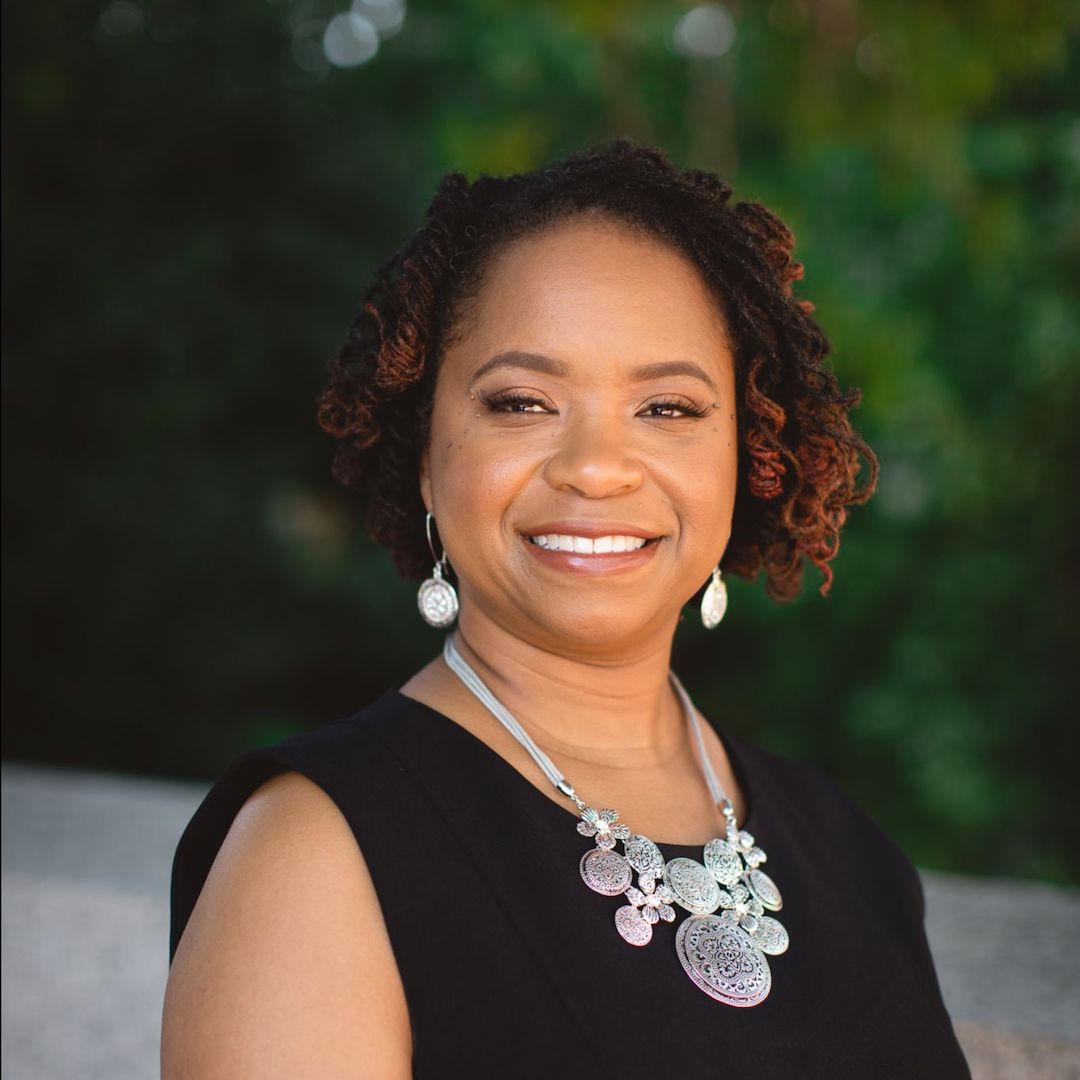
“At this point in my career, I am speaking up because it has to be about our humanity and love. Apathy can no longer be an option in response to all the trauma that youth in foster care experience.”
Hi there, A Home Within Community! I’m Candice Simonds. As the California Clinical Director for the A Home Within-CASA Therapy Project, I lead our collaboration to expand telehealth by identifying strategic partnerships. Recently, I had the privilege of having a Sunday fireside chat about social work practice and youth in foster care with Aisha Henry, Clinical Director for our DMV (D.C., Maryland, Virginia) Chapter. I was eager to learn more about her experiences as a professional social worker and hear how A Home Within aligns with her clinical priorities. I was immediately impacted by the scope and breadth of her commitment to reimagining clinical practice as a space that is concerned with humanity, love, and community. I hope you’ll enjoy reading the Q&A below and learning more about Aisha’s incredible work.
Candice: Tell me about your professional background.
Aisha: I have experience working in communities: with families living in poverty, with foster children who fall behind in school because they move around so much and don’t get help until they reach a certain level of acuity—and even then they are often not fully evaluated. They don’t get a full physical exam, psychotropic medication to address their trauma, or school evaluations to determine if a learning disability is impacting their behavior. There is no one really watching out for them because each system has competing ethics and values.
C: What values inform your clinical posture and what do you hope to cultivate?
A: It really is about understanding that love and unconditional support are basic human needs, just as important as air and water. To be disconnected from family and permanent sources of love is like walking outside with no ground. At this point in my career, I am speaking up because it has to be about our humanity and love. Apathy can no longer be an option in response to all the trauma that youth in foster care experience.
C: How did you first get involved with A Home Within, and why were you drawn to it?
A: I received an email from Reed and I’m drawn to the organization because it meets a basic need with no financial strings attached.
C: How do you think A Home Within is impacting youth in foster care?
A: The reasons I appreciate A Home Within are first, because you are offering therapy with no fiscal strings attached, the client and therapist have an actual possibility to develop a relationship, and second, the client, rather than a budget, gets to decide when therapy ends. A Home Within represents hope and positivity, which can be hard to find.
C: What would you say to someone who was considering volunteering with and/or donating to A Home Within?
A: I think I am still learning my pitch…I guess I would ask them, “What matters to you? Where are the gaps? Where is your heart?” Because of professional boundaries, we ignore our heart—we stop listening to it. It doesn’t mean that we have poor boundaries if we care and volunteering time is sacred.
C: Where do you see A Home Within headed in the next five to ten years? What would you like to see happen?
A: I would like to see us be more flexible in how we engage people in foster care—expand our offerings to advocacy, education, and really contribute to the knowledge of our communities because when you leave foster care, you often return to a dysfunctional community.
C: So far, what do you think is special about A Home Within?
A: Everyone is positive and hopeful. It’s energizing, and unfortunately, you don’t always experience people organized around a solution. And I cannot be silent anymore. I cannot tolerate apathy.
C: Love is a basic human right and the lack thereof as distancing us all from our own humanity is soul-stirring….it has been a privilege to speak with you today and I will look forward to hearing more from you in the days to come.
A Home Within is the only national organization dedicated solely to meeting the emotional needs of foster youth. Our volunteer therapists meet with a young person that they have committed to “for as long as it takes.” We identify, recruit, train, match, and support licensed therapists who each provide free, weekly, one-to-one therapy to a single foster youth.
We currently have a wait list of individuals seeking support through therapy. If you’re a licensed clinical therapist with one hour per week to spare, please consider volunteering with us and help us by spreading the word to your professional network. We provide access to a thriving national community of therapists, free and ongoing Continuing Education courses, and support from consultation groups.
Please feel free to reach out to our Program Coordinator, Chrissy Arlen, for more information on volunteering: chrissy@ahomewithin.org or visit our Volunteer FAQ page.
“Being part of the solution and making a commitment to one youth can have a valuable impact for an entire community.”
Hi there, A Home Within Community! I’m Candice Simonds. As the CA Clinical Director for the A Home Within CASA Therapy Project, I lead our collaboration to expand telehealth to youth across the state. I endeavor to support our community of CA volunteers and respond to the unique needs of each chapter. This fall, I had the privilege of having lunch with AHW Volunteer Therapist and Clinical Director of our San Diego Chapter, Mae Howard, LCSW, RPT. I was eager to learn “what” and “who” called her to serve and volunteer to be a leader in her community. I was immediately impacted by her warm smile and felt her passion for improving mental health disparities for transition-age youth in the County of San Diego. I hope you’ll enjoy reading the Q&A below and learning more about Mae’s incredible work.
Candice: Tell me a little bit about yourself—whatever you’d like to share.
Mae: Well, I’m a mother of two awesome sons. I’m a career changer. I started off wanting to have a career in International Business but due to personal dynamics shifted to social work after my undergrad.
C: How did you first get involved with A Home Within, and why were you drawn to it?
M: While working at Children’s Hospital, I observed gaps in care, youth feeling frustrated with having to retell their foster/trauma stories, or having gaps in care due to funding issues. And on a personal note, in late 2016 I started looking into adopting and found a flyer at Children’s Hospital from AHW. This flyer addressed a need for me to get more information and created an opportunity for me to provide mental health services by counseling a youth aging out of foster care with multiple episodes in treatment.
C: How would you describe the impact A Home Within has on individuals, families, and/or communities?
M: We fill in the gaps and provide continuity of care for youth involved in foster care.
C: What would you say are A Home Within’s most significant accomplishments during your time with the organization?
M: I’m loving the support they give to all their chapters and bringing a professional community together to address social problems.
C: What would you say to someone who was considering volunteering with (and/or donating to) AHW?
M: 100% Do it! Being part of the solution and making a commitment to one youth can have a valuable impact for an entire community.
C: What do you think people not yet familiar with A Home Within would find most surprising about the work the organization does?
M: The amount of research happening is awesome and we are nationwide!
C: Where do you see AHW headed in the next five to ten years? What would you like to see happen?
M: I would love to see chapters expand to more states especially in states with higher numbers of youth involved in the foster care system.
C: What’s the most special part of AHW for you?
M: The mere fact it exists is special and it feels amazing to be available to families.
C: What impact has your work with AHW had on your life?
M: It has touched my heart in a way that no other program has—I have never experienced this depth of connection to my community by serving one person.
A Home Within is the only national organization dedicated solely to meeting the emotional needs of foster youth. Our volunteer therapists meet one on one with a young person that they have committed to “for as long as it takes.” We identify, recruit, train, match, and support this network of licensed therapists who each provide free, weekly, one-to-one therapy to a single foster youth.
In Mae’s San Diego Chapter we currently have a waitlist of individuals seeking support through therapy. If you’re a licensed clinical therapist with one hour per week to spare, please consider volunteering with us and help us by spreading the word to your professional network. We provide access to a thriving national community of therapists, free and ongoing Continuing Education courses, and support from consultation groups.
Please feel free to reach out to our Program Coordinator, Chrissy Arlen, for more information on volunteering: chrissy@ahomewithin.org or visit our Volunteer FAQ page.
The Giving List’s mission is to help build strong and lasting relationships between philanthropic communities and the nonprofit organizations which not only serve as a critical safety net in their areas but are foundational to the functioning of a healthy and civilized society. A Home Within is proud to join that list of organizations in 2021-2022.

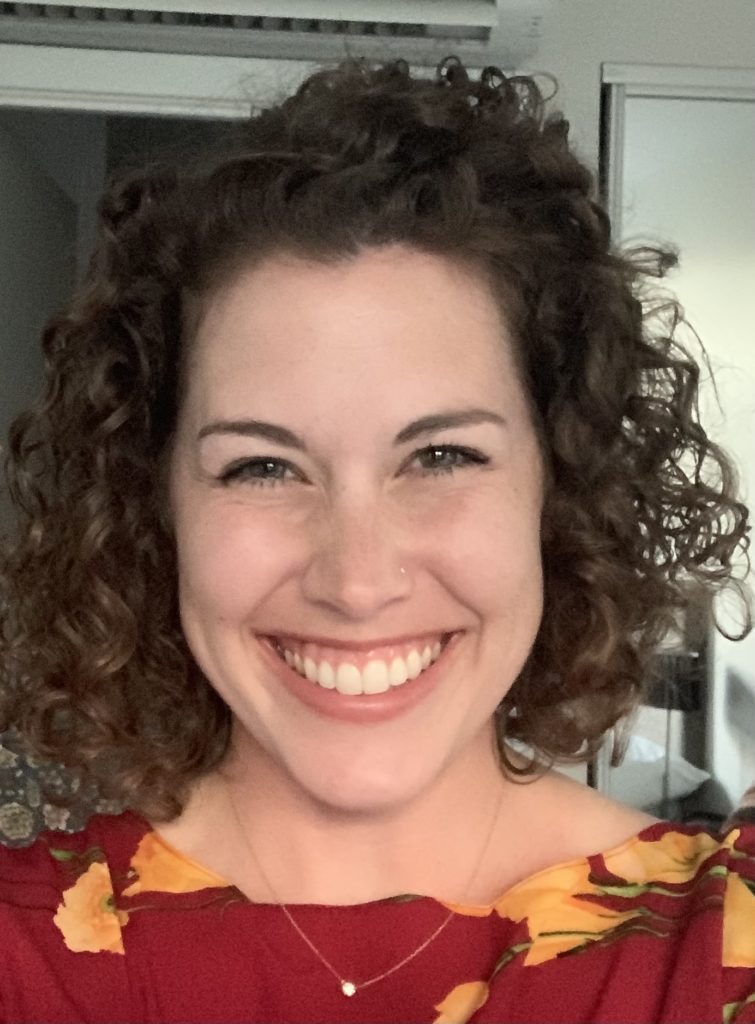
“Working with foster youth, I realized that was really where I needed to be, because kids who are in foster care need so much more support than a lot of people I have worked with.”
Emily Kent always wanted to do something in the helping field. She knew she wanted to be a social worker after volunteering at shelters throughout her childhood and visiting a domestic violence shelter in high school. She continued this type of work into her undergraduate years, and eventually decided to focus her work on children and families.
After graduating from UCLA with a Masters in Social Welfare, Emily had her first encounter with the foster care system when she began working at the Bill Wilson Center in San Jose with 16- to 24-year-old people who were homeless, often suffering from substance abuse. She found that most young people in that age group who became homeless had either aged out of the foster care system or run away from home. “Working with foster youth, I realized that was really where I needed to be,” Emily says, “because kids who are in foster care need so much more support than a lot of people I have worked with.”
Her focus on children in foster care led her to work as a clinician and supervisor at A Better Way in Oakland while maintaining a private practice to hone her skills in different therapeutic modalities. Even during Covid, Emily managed to safely see her small circle of clients in person to maintain a stable therapeutic environment.
When she left her job to fully commit to her private practice, she found time for volunteer work. “I really wanted to find a better way to connect clients to lifelong therapists,” Emily says. This mindset ultimately led her to become Clinical Director of the San Francisco Chapter of A Home Within, a natural fit for her with her prior supervisory experience.
As a Clinical Director during the pandemic, Emily has contended with many obstacles including long waitlists, overbooked therapists, and challenges getting in touch with new volunteer recruits. She has made it her goal to get in touch with all of the San Francisco therapists to ask if they are interested in taking on an additional AHW client and to encourage them to reach out to their colleagues as well to let them know about A Home Within and the increasing need for volunteer therapists.
She has made it a point to make sure that all of the volunteers in her chapter feel supported and appreciated throughout their experiences. “The therapists like having a client,” she says. “Most have been seeing their clients for a while. They feel connected. They love the program. They know they can reach out for help.” For Emily, her experience with A Home Within has been humbling and she feels it is a privilege to do this type of work.
Emily has found a silver lining to the pandemic: the use and acceptance of telehealth. “Now when clients wake up and don’t feel super awesome,” she says, “they don’t have to cancel their session.” Additionally, she notes that it can be very hard for the therapist and the client and their parents each time a child moves to a new home in a new city, making it more difficult to have access to the same office. “So I think telehealth has really opened the door for making those lasting connections much more accessible.”

As I have had the honor of getting to know and work with A Home Within clinicians and clinical directors, I have been struck by how unique each chapter is in both strengths and character. In fact, it is one of the reasons I have found the group and individual meetings with clinical directors so energizing.
Earlier this summer, Reed, Grace, and I had the pleasure of meeting with most of the volunteers in the Hudson Valley chapter. The impetus for this meeting came from the current clinical director, Kathy Adorney, and I am so glad that we took her up on the suggestion. From this meeting, I came up with the idea that we could spotlight a chapter in the A Home Within newsletter every couple of months. This way, our diverse community can learn about each of the chapters and share ideas with one another. The first chapter spotlight will be for Hudson Valley!
The Hudson Valley chapter was founded in 2009 by Hal Chorney. The chapter is composed of eight volunteer clinicians (with a ninth about to join), two consultation group leaders, and one clinical director. The clinicians see child and adolescent clients ranging from 6 to 15 years old. The two consultation groups meet weekly, and all clinicians participate enthusiastically. In fact, when we met with the Hudson Valley volunteers, there were many comments about how vital the group meetings had been for their learning and ongoing engagement with A Home Within. Click here to hear one volunteer, Danielle, describe how she values consultation groups.
A hot topic for discussion in the meta-consult groups with clinical directors is whether to require volunteers to attend consultation groups as part of their commitment, as well as how to ensure that the consultation groups are professionally meaningful and engaging. Clinical directors are all over the map about these topics, so I specifically asked Hudson Valley what they do. The founder, Hal, responded with a strong endorsement of the value of consultation groups:
“We began with the requirement that everyone had to commit to weekly attendance in a consultation group. I remember one of the first questions raised in the group was: When will our treatment plan be required for clients? No one anticipated treatment to be “as long as it takes,” which is our goal and a service the government could not provide. Our aim has always been to make every treatment individually suited to that child and to treat every therapist as individually as possible, trying to work with strengths and weaknesses, without criticism. The consultation leaders were all people with extensive clinical experience. We avoided the polemics of the field by focusing on the clinical needs and allowing full discussion of problems. Our view has evolved, and our goal of the work is to facilitate stability for the child and that love bonds between the child and the parental figures would be the curative agent. Thus came the need to work with anyone with important contact with the child. The result has been that even though we are a volunteer organization, the consultation groups provide a high level of supervision not easily available at any price. All members of the group contribute as well as the group leader. Consultation group participation remains a requirement and has proven to be a major source of recruitment of therapists.”
One of the consultation group leaders, Tim, spoke here about what being part of A Home Within has meant for him both professionally and personally, by “simply looking to make a connection, a change, and a difference.”
Another aspect of the Hudson Valley chapter that is worth highlighting is how it is perceived in their local community. Kathy, the current clinical director, shared some thoughts:
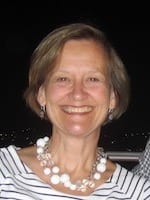
“The Department of Social Services values the clinicians’ work and eagerly fills every vacant position with a new client. Among therapists, there is an awareness of and respect for AHW. Many former AHW therapists have spread the word. We are hoping to expand our footprint in the therapeutic community by creating a Facebook page for our chapter, reaching out to training institutions in the area, and offering workshops that would be open to other therapists in our community.”
In my view, the support and engagement that volunteers receive from consultation groups, and their reputation within their local community, are two major strengths of the Hudson Valley Chapter. The strong relationship with the Department of Social Services provides them with a steady flow of referrals and community support for volunteers’ ongoing work within their community.
Speaking of strength, Kathy inspired me with her response to my inquiry about why she decided to take on the clinical director role. (Side note: I was curious about this because we are short a few clinical directors in other areas of the country.) Kathy said:
“My husband has been a therapist with A Home Within for over 10 years and is now working with his third client. Working with AHW has enriched his life and the lives of his clients. When the former clinical director asked me to take the position because she was retiring, I wanted to be of assistance to this incredible organization.”
Finally, as is the case for most of our chapters, Hudson Valley needs more volunteer clinicians to join their chapter! They need therapists who can work with clients of all ages as several local organizations that serve young adults would like to refer to A Home Within. So, if you are reading this and know of any potential recruits, please reach out to them. You can tell them that they will find a community of dedicated, caring, and experienced volunteers.

Written by
Deanna Linville, AHW Programs & Research Consultant
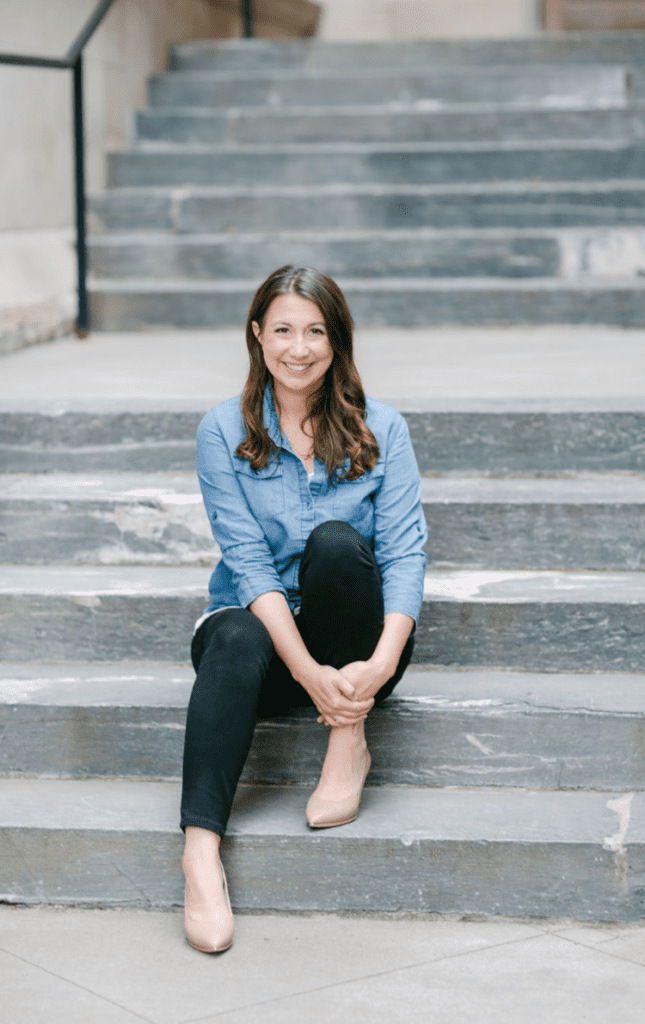
“It’s an amazing experience. It gives therapists the opportunity to truly use their skills to help those who have experienced trauma, who wouldn’t usually have access to this type of assistance. You get this support network, the consultation groups, and continued education.”
Several years ago, when Elizabeth Earnshaw and her husband were getting married, instead of a wedding registry they chose a donation registry. Reading through the donation options, none really spoke to her—until she saw A Home Within.
Elizabeth had provided emergency foster care in Philadelphia, and as a therapist worked with a lot of children after Hurricane Katrina who were at some point in foster care or went into foster care. “My heart was there with them,” says Elizabeth. “And my husband was adopted. So we just have a big spot in our hearts for those trying to navigate through living conditions and the mixed feelings that come along with that.”
After finding A Home Within through her wedding donation registry, Elizabeth decided to become an AHW Volunteer Therapist. She has been providing therapy to twin siblings since 2017, beginning when they were in middle school. She has now watched them graduate from high school, an experience she truly cherishes.
As is very common for youth in foster care, Elizabeth’s clients had many experiences with therapists prior to being matched with her through A Home Within. “A lot of the time they get diagnosed with all these things by various therapists who don’t get to know them,” Elizabeth says, noting that this is an issue she faces with many of her clients. She believes that it is not necessarily the fault of the therapist but rather insurance that only allows for a minimum number of sessions, resulting in rash diagnoses.
Clients often reach Elizabeth very frustrated and fed up with counselors, psychologists, and social workers. “I think my AHW clients really like how A Home Within gave them a more long-term opportunity,” she says. “I think it has been a great experience. Coming in, the twins knew we could meet as long term as they wanted, and they have really taken advantage of that. When you know someone for a year or two, it destigmatizes the person and moves out of this diagnostic model that might not work for children going through such trauma. Some things just can’t be understood through a short-term relationship.”
Elizabeth describes her journey to becoming a psychologist as not very straightforward. She began studying to become a teacher and ended up with a degree in organizational development, which is essentially the psychology of companies. She then went to school to become a relationship therapist in order to provide therapy to couples and families. In Louisiana she worked to help rebuild mental health programming after Katrina. She later moved to Philadelphia, where she opened her practice, A Better Life Therapy.
In addition to her private practice, Elizabeth operates her Liz Listens account with over 200,000 followers, teaches classes, and has a book coming out in November. Available November 30th, I Want This to Work is a book designed to help couples navigate the complexities of modern life together. Elizabeth has an enormous and growing social media audience, and posts nearly every day to educate others about how to have healthy relationships.
Elizabeth really appreciates the long-term support A Home Within offers to both clients and therapists. She also appreciates the access to online therapy, especially through the pandemic.
“It’s an amazing experience,” says Elizabeth of A Home Within. “It gives therapists the opportunity to truly use their skills to help those who have experienced trauma, who wouldn’t usually have access to this type of assistance. You get this support network, the consultation groups, and continued education. It is an hour out of your week, and it’s an amazing way to utilize your skills.”
